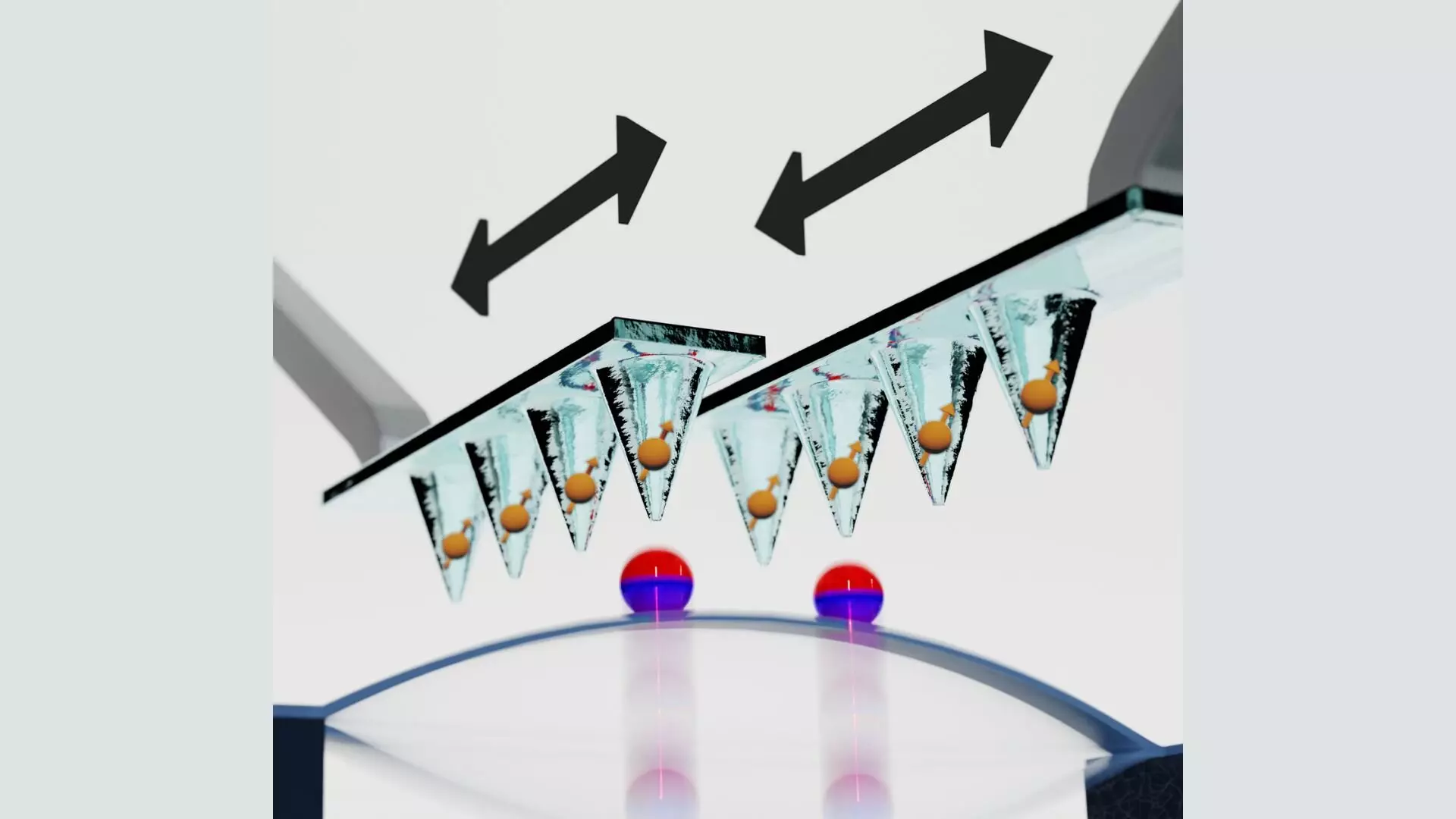Recent research published in Physical Review Letters has ignited excitement in the world of quantum information processing by proposing a groundbreaking strategy that merges solid-state spin qubits with nanomechanical resonators. As the quest for efficient and scalable quantum systems intensifies, understanding the fundamental requirements—long coherence times, stability, and scalability—becomes imperative. Solid-state spin qubits, which are being heavily investigated for their exceptional coherence times, seem to be at the forefront of this technological revolution. However, the trailing challenge remains: scaling these qubits for practical use.
This critical research, spearheaded by graduate student Frankie Fung and a team from Harvard University, unveils unexpected avenues for addressing these scalability challenges. Fung articulates, “While small quantum registers using solid-state spin qubits have been demonstrated, they rely on magnetic dipolar interactions.” These short-range interactions hinder the effective scalability of quantum systems composed of multiple qubits, thus constraining the potential of solid-state technologies.
Nitrogen-Vacancy Centers: The Beacon of Qubit Innovation
At the heart of this study lies the innovative use of nitrogen-vacancy (NV) centers in diamonds as qubits. To comprehend the significance of NV centers, we need to delve into the structure of diamonds and how this unique defect allows for the harnessing of quantum properties. Diamond’s tetrahedral lattice structure is inherently stable, but the introduction of nitrogen—a substitution for carbon—creates a vacancy that forms an NV center. This defect features an unpaired electron, which is instrumental in providing the necessary spin states utilized in quantum computation.
The advantages of NV centers extend beyond stability and coherence. Their exceptional optical properties facilitate the effortless transfer of information using photons. This presents a dual opportunity: while they act as quantum processors, they simultaneously enable efficient communication channels, driving further interest in integrating these qubits with solid-state devices.
However, the limited range of qubit interactions poses a valid concern, as effectiveness in quantum information protocols heavily relies on the ability to entangle qubits. The approach proposed in this study promises a pathway to surmount these limitations through the inclusion of nanomechanical resonators.
The Groundbreaking Proposal of Nanomechanical Resonators
Fung and his team proposed an innovative architecture that utilizes nanomechanical resonators to mediate qubit interactions. Essentially, this involves positioning NV centers within individual scanning probe tips, which can traverse a nanomechanical resonator. Through this dynamic, the resonator enhances qubit connectivity, facilitating non-local interaction—a previously elusive goal in solid-state quantum mechanics.
The functionality of nanomechanical resonators is impressive. These ultra-small structures operate at nanoscale frequencies and demonstrate sensitivity to various external forces. By facilitating interactions among spin qubits through mechanical resonators, the researchers proffer a promising solution to generating complex entangled states necessary for sophisticated quantum applications, including quantum computation and cryptography.
Additionally, by utilizing micromagnets within a silicon nitride nanobeam, the study introduces a novel mechanism to manipulate electron spin states of qubits with heightened precision. The smart design key is that the nanobeam not only guides laser light efficiently but also establishes a magnetic field essential for effective qubit operation.
Proof-of-Principle and Future Aspirations
In validating their proposed architecture, the research team conducted proof-of-principle measurements that successfully demonstrated the preservation of coherent information within an NV center during mechanical transport. With the quality factor soaring around one million at low temperatures, the team’s findings indicate a promising capacity for maintaining highly coherent mechanical oscillations. However, they also acknowledge that the current coupling strength remains insufficient for practical realizations of their architecture.
Fung underscores prospective enhancements, such as integrating optical cavities with nanomechanical resonators. This combination could refine measurement precision while unlocking new experimental horizons—such as transferring quanta of information seamlessly between spins and mechanical structures. Such innovations may reframe the operational dynamics of hybrid quantum systems, allowing for long-range qubit interactions harnessing the varied advantages of distinct quantum technologies.
As researchers pave new pathways for hybrid quantum systems, the prospect of realizing highly scalable quantum processors is rapidly inching closer. The potential of coupling nanomechanical resonators with solid-state qubits promises a transformative shift in quantum information science—expanding practical deployments into areas previously deemed unattainable. The confluence of fundamental physics and cutting-edge engineering is essential as we forge ahead into a quantum future laden with unprecedented capabilities.

